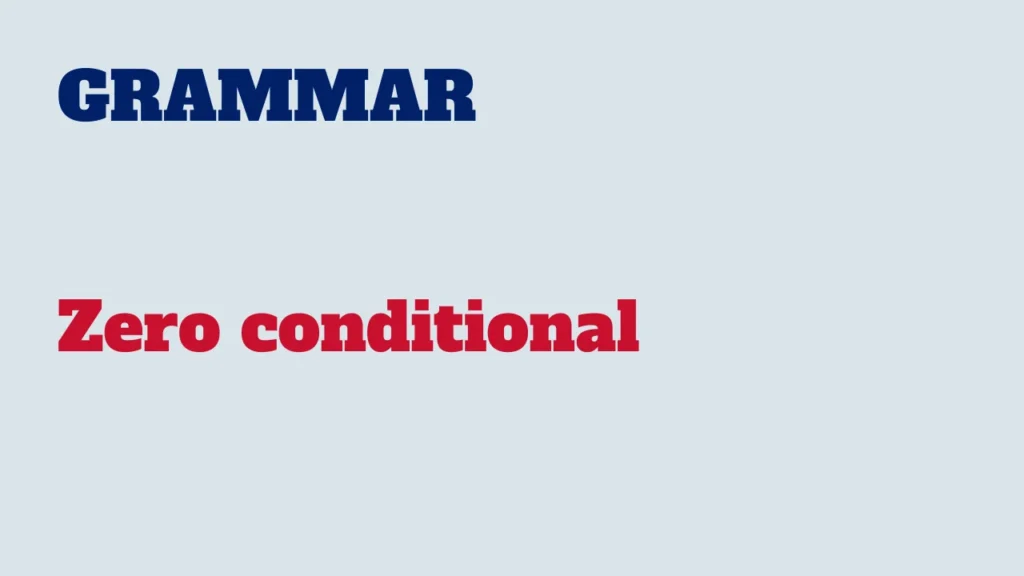The zero conditional is a type of conditional sentence used to express general truths, facts, or situations that are always true. It is formed with the simple present tense in both the “if” clause and the main clause.

In this lesson, we will delve into the structure, usage, and common scenarios for the zero conditional.
Structure of zero conditional:
If Clause: Present simple tense.
Main Clause: Present simple tense.
Examples:
If it rains, the streets get wet.
If you heat water to 100 degrees Celsius, it boils.
If you mix blue and yellow, you get green.
Common uses of zero conditional:
Stating general truths:
“If you heat ice, it melts.”
Describing scientific facts:
“If you mix red and blue, you get purple.”
Expressing cause-and-effect relationships:
“If it’s sunny, the flowers bloom.”
Key points about zero conditional:
- Timelessness: The zero conditional is timeless and does not refer to a specific time or situation. It states a general truth or fact.
- Factual statements: It is used for situations where the result always follows the condition, as it represents a cause-and-effect relationship.
- Simple present tense: Both the “if” clause and the main clause are formed with the simple present tense.
A common mistake to avoid:
Incorrect use of past tense:
Incorrect: If it rained, the grass would grow.
Correct: If it rains, the grass grows.
Additional tips:
Use of commas:
When the “if” clause comes first, a comma is often used to separate it from the main clause.
Example: “If you mix red and blue, you get purple.”
Clarity in cause and effect:
The zero conditional is particularly effective in expressing straightforward cause-and-effect relationships.
Mastering the zero conditional will enable you to communicate general truths and cause-and-effect relationships accurately. Practice creating sentences in the zero conditional to reinforce your understanding. Happy learning!



